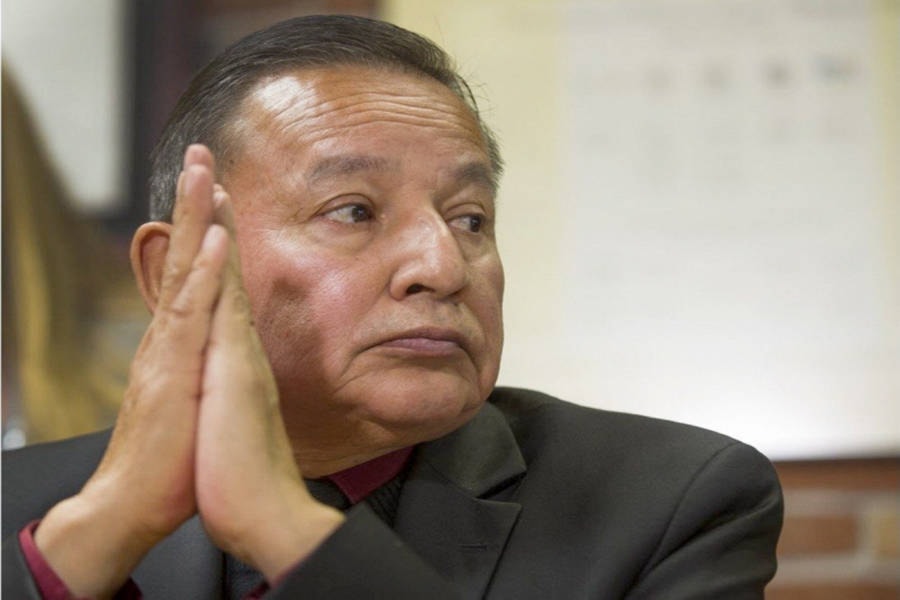A shift to proportional representation could increase representation of B.C.’s Indigenous population in the provincial legislature, according to one Indigenous leader.
B.C. Attorney General David Eby released How We Vote, his report on electoral reform, on May 30, with about a page of the main discussion in the report dedicated to feedback from Indigenous participants.
About 3,000 individuals self-identifying as First Nations, Métis or Inuit completed the online questionnaire, part of the provincial government’s consultations prior to revealing the ballot question, according to the report. Those respondents were given questions specific to Indigenous matters in the provincial electoral system, including whether they feel adequately represented in the legislature.
Related: How to start thinking about a new voting system
“A large majority (73 per cent) responded no, with 20 per cent responding that they felt somewhat represented. Just under five per cent responded that they felt adequately represented,” the report reads.
Currently, the legislature has four Indigenous MLAs of all parties. But even this record high makes up around 4.5 per cent of elected representatives, while Indigenous Peoples, Canada’s fastest-growing demographic, make up just shy of six per cent of the B.C. population.
And that follows decades of little to no representation. Status First Nations only gained the right to vote in B.C. in 1949, the same year B.C. elected its first Indigenous MLA, Frank Calder.
Related: Four options to be offered for B.C. voting referendum
Grand Chief Stewart Phillip, Union of B.C. Indian Chiefs president, said Indigenous under-representation tends to lead to political decisions that don’t properly take Indigenous Peoples into account. He pointed to the Kinder Morgan pipeline and the Site C dam as examples.
“There is some interest in the proportional representation dialogue, given the fact that we believe that would provide a greater opportunity for Indigenous engagement and direct involvement in the legislative affairs of the Province of British Columbia,” Phillip said, adding an echo of just about every political pundit in B.C.:
“When the question does go to referendum, we’re concerned that due to the confusing nature of the NDP question presentation that it will not be embraced by the B.C. electorate.”
Related: Electoral reform vote in B.C. includes $500,000 for pro and con groups
A presentation on electoral reform was slated to be heard at the UBCIC annual general meeting in June, but Phillip said that presentation was postponed until the annual general assembly in September.
That meant B.C. chiefs were unable to vote on a direction for the union, like campaigning or offering information on proportional representation and the referendum.
Eby’s report noted “strong support” for a guaranteed set of seats of Indigenous representation in the legislature, similar to the Maori model in New Zealand. Face-to-face meetings with First Nations leadership reportedly yielded a similar response.
Related: Electoral reform could mean less rural representation: Penticton MLA
Penticton MLA Dan Ashton, the Indigenous affairs critic for the B.C. Liberals, opposed the Maori system, saying he would rather see First Nations bands within the regional districts participate in that level of government.
“To be frank, it’s already at the provincial level. Eliss (Ross) ran, Melanie Marks ran, Adam Olsen ran and were elected. It’s there. That possibility exists,” Ashton said, going on to compare the Maori model to reserving seats for a political party.
“I personally have a bit of trouble to just say ‘OK here it is, we’re going to save about X amount of seats for all Indigenous people to be represented at the legislature.’”
Related: Battle lines drawn over B.C. electoral reform referendum
Phillip acknowledged the Maori system, but he also pointed to the Royal Commission on Aboriginal Peoples, which produced a 4,000-page report with 440 recommendations that have been largely ignored.
“One of its recommendations was to restructure the parliamentary system to provide for an Indigenous component in the House of Commons, where we would have our own place in that institution,” Phillip said. “It would be populated by Indigenous Peoples, and they would have direct input into the national legislative debates.”
Ashton pointed to the current representation — in particular, he named Olsen, Ross and Marks, but Deputy Premier Carole James, originally from Saskatchewan, is also of partial Métis descent — as a point to celebrate, given the history.
Related: South Okanagan group forms to push ‘yes’ on electoral reform
“It may be a small step for some, but each party within the house has a First Nations person on it that were elected underneath the system that is currently in place,” Ashton said.
“I think Dan has a point that there is greater participation and increasing effort on the part of the mainstream political parties to promote the nomination of Indigenous candidates to represent the various ridings throughout the province, which I think is a good thing,” Phillip said.
“But again, I think proportional representation would increase the participation and nomination of Indigenous candidates.”
